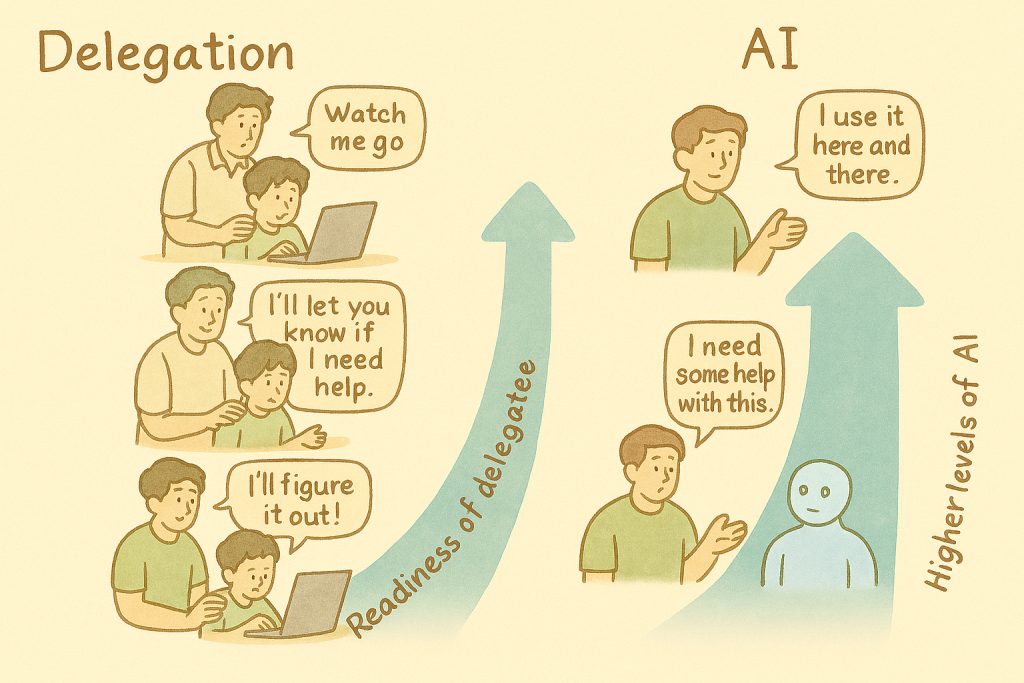I had shared my experience with Agile Maturity Assessments a while ago, the key challenge over a period of time was
- the lack of enthusiasm due to it being a repeat exercise, no novelty
- the teams progress towards the maturity slowing down as they achieve maturity, no significant impact.
But a surprise
This was my perception, but I was surprised to see a team do the assessment with enthusiasm and rigour and work out the action items with diligence. That too this was a team that had been doing the assessment for a few quarters. Then I saw the same repeated across a few other teams too.
On closer look, what emerged was that the teams had been practicing agile a for a period of time. That had brought in a more in-depth understanding of the values, principles and practices in the team. They were interpreting the same questions with more insight, depth and candour. It was a pleasant surprise and such wonders never cease in the coaching world.
In the past to tide over drop in enthusiasm towards the maturity assessment. I would reiterate the 12th Agile Principle and to focus on continuous improvement would help.
Health check
Words influence one’s thoughts and create a mental picture of what is intended and how it will be achieved. One of the options that came up was terming this exercise a health check instead of maturity assessment. A small change with a great impact, with use of this term the pressure to become mature gets replaced with a desire to stay healthy.
The idea came from another initiative of my organization. One is more open to accept that they may have missed aspects that keep them healthy from the Agile perspective. It also helps the team being alert and open to the fact that there could be a variation in any aspect that could impact the team health. Variation could result in drop in health and that is more palatable than a drop in maturity.
Using this term will help maintain a steady focus on the continuous improvement.
Bias to action
Irrespective of the term used there needs to be a bias towards action. The team needs to identify what they need to get back to healthy, doing a health check and not taking any action to improve is of no consequence.
The environment is important too, the team can make changes that are within their purview and control. Some of the changes identified may need to done at an organizational level. The organization has to help by ensuring there is required support for the same.
Leadership focus
The leaders have good focus on the organization achieving the desired business goals and outcome. To achieve the outcome, the teams have to be healthy and well supported, this part is well understood. The visible and transparent commitment to this is often perceived as lacking or there could a real lacuna. Once this commitment visible to the entire organization it will work wonders.
This requires the leader to focus on the team health related action items, which are often neglected. All the leaders have to do is to look at the team’s action plan, provide the support and check back on how is there progress and provide any help. A cadence of a monthly meet with the team or a set of teams, to look at this is more than sufficient to get this going.
Changing landscape
One of the problems with the maturity/health check instruments that I used was that the data was not captured. It was more of a survey with anonymous inputs or inputs with consensus. This worked well in the initial stages and provided an overview of where teams were as well as a means to work out improvements.
Attempts were made to consolidate data, the roll up of maturity was not of much use. Consolidating of the improvement items across the organization was a challenge.
With the Agile transformation encompassing the whole organization and number of teams increasing, the need to have the data captured has become important. Now there are tools that do this well as well as organizations are creating their own. Once you capture data it is possible to compare how teams are doing, how organizations are doing with respect to each other. I must stress that this not to see who is doing better, but to share and learn from other teams and organizations. Say a team has challenges with distributed nature of its existence, but another has managed to do well, an opportunity to share and learn exists.
The tools help provide a backlog of the improvement items that are at the team level and the organization level. Though this could be maintained along with the regular backlog, having it separate and close with the inputs from team is useful.
The tools also provide other data, for example one could look at what the team feels vis a vis the stakeholder. We have data for all the teams together too, one has to be careful to ensure that the data is used for improvements and not for rewards.
Lastly, we all stakeholders should ensure that there is action planning and execution.




